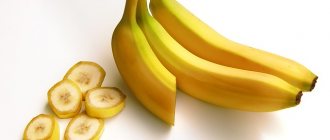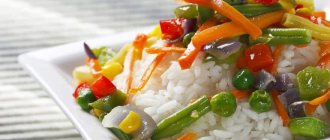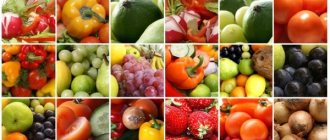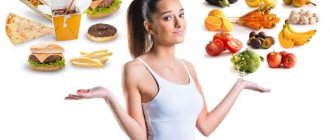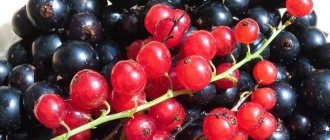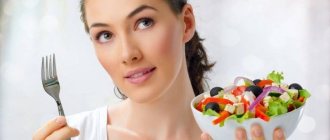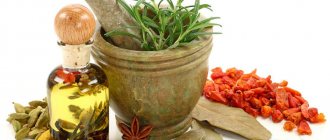Diet for hiatal hernia is of no small importance for relieving symptoms and for complex treatment of this pathology. A hernia occurs as a result of a weakened esophageal opening, resulting in a displacement of organs from the abdominal cavity to the thoracic cavity. The esophagus is held in the diaphragmatic opening thanks to the connecting material, which undergoes dystrophic disorders and loses its elastic properties.
Features of the disease
The diaphragm is a partition that separates the abdominal region from the chest cavity. It has 3 large openings - aortic, venous, esophageal. The latter passes through the esophagus, separating it from the stomach. If the stomach is displaced, a hiatal hernia is diagnosed.
Causes:
- Thinning of the diaphragm tissue is associated with natural aging processes. Therefore, the disease is often diagnosed in adulthood.
- May be a consequence of congenital pathology due to undeveloped membrane structures.
- Increased pressure in the abdominal cavity occurs during pregnancy and is also common in overweight people. It often occurs after sudden weight loss due to a decrease in the elasticity of muscle fibers.
- Physical activity, systematic coughing, vomiting, and gas formation lead to an increase in blood pressure.
- Pathologies of the digestive system provoke anatomical changes in the esophagus and the formation of a hernia. Erosion, ulcers, and inflammation change the structure of tissues and lead to displacement of organs.
- Abdominal injuries, as well as operations performed, can cause pathological symptoms.
- Deterioration of the condition is observed in the presence of bad habits, smoking, and drinking alcohol.
Types of disease:
- sliding hernias are diagnosed more often than other pathologies; they are dangerous due to the movement of the digestive organs from the abdominal cavity to the thoracic cavity;
- paraesophageal hernia is characterized by penetration of the fundus of the stomach into the chest.
The pathology is difficult to determine due to the absence of characteristic symptoms; diagnosis requires an integrated approach:
- Ultrasound;
- X-ray;
- umbrella.
Symptoms:
- prolonged heartburn;
- smell from the mouth;
- chest discomfort;
- uneven heart rhythm;
- difficulty breathing.
Foods That Don't Cause Symptoms
In terms of prevalence, the disease is in 3rd place among gastrointestinal diseases after ulcers and cholecystitis. Formations can be fixed or sliding, sometimes there is a third type - mixed. Based on their composition, they distinguish between cardiofundic, gastric hernias and those affecting the esophageal opening.
The main reasons for the development of the disease are degenerative changes in connective tissues, short length of the esophagus, operations on the organ, increased pressure in the peritoneum, genetic predisposition, overeating, heavy physical work, weakened gastrointestinal motility.
When a hernia appears, the patient complains of the following symptoms:
- Stitching or cutting pain, burning. The localization of unpleasant sensations is concentrated in the sternum area.
- Heartburn.
- Belching air, regurgitation.
- Difficulty in the digestion process.
- Hiccups.
Symptoms worsen in a horizontal position or after eating.
These foods are low in acid and usually do not cause heartburn:
- bananas and apples;
- green beans, peas, carrots, broccoli;
- cereals, especially whole grains, and products made from them, bread, pasta, crackers;
- milk and dairy products, such as low-fat or skim yoghurts;
- egg white, egg powder;
- low-fat cheeses, soft cheeses, low-fat sour cream;
- lean meat, chicken, lean fish;
- water;
- pretzels, rice balls, baked potato slices;
- sweets with low fat content, without mint and/or chocolate.
Many years of experience show that treatment methods and diet therapy aimed at eliminating the causes of the disease have the greatest practical significance. Main causes of hernias:
- Age-related changes in muscle tone.
- Eating foods that irritate the digestive system, causing constipation or gas formation.
- Eating at long intervals. And as a consequence of this, overeating leads to excess weight.
- Smoking and drinking alcohol.
- Work or sport that involves physical activity and heavy lifting.
- Consequences of difficult childbirth.
- Chronic diseases of the digestive system (gastritis, stomach ulcers and other pathologies).
- Injuries to the chest, ribs and abdomen.
The purpose of the hiatal hernia diet
The change in structure occurs due to high intra-abdominal pressure. Diet for esophageal hernia helps to reduce it. Timely diagnosis and adherence to a therapeutic diet helps prevent surgical intervention. A diet for hiatus in the postoperative period is also recommended for the speedy restoration of diaphragm function. Following a number of nutritional rules helps eliminate uncomfortable symptoms, get rid of heartburn, and ease breathing.
Diet rules for hiatal hernia:
- when the stomach is stretched, cavity pressure increases - a common cause of the pathological condition; overeating should be avoided;
- products that provoke fermentation and, as a result, gas formation are excluded;
- it is important to cure concomitant diseases - pancreatitis, cholecystitis, smoked, fatty foods, alcohol, which often provoke malfunctions of the liver and kidneys, are also prohibited;
- it is necessary to ensure the supply of nutrients, the balance of nutrients stimulates the process of restoring the elasticity of muscle fibers;
- adherence to a diet will prevent the onset of feelings of hunger, and as a result, overeating and an increase in intracavitary pressure;
- pay attention to grinding and chewing food, which promotes its rapid digestion and absorption, reducing the risks of fermentation and gas formation.
Diet for hiatal hernia is most effective at the initial stage. Prescribed for correction at the first stage. When uncomfortable symptoms appear, changes in eating habits are not enough; drug correction is required. Advanced paraesophageal and sliding esophageal hernias require surgery; in the future, a diet is followed to avoid recurrence of the pathology.
Chemical sparing
When a hiatal hernia forms, the production of gastric juice, hydrochloric acid and other enzymes that can enter the esophagus increases. To reduce the likelihood of irritation of the mucous membrane, it is necessary to choose suitable foods for food.
All foods that can cause an increase in the level of acidity in the esophageal opening should be excluded from the diet. This is usually influenced by fried and spicy foods, smoked meats, sauces, sweet desserts, and chocolate.
During a gentle diet, you should not eat pickled and salted foods, canned food and rolled vegetables. Canned food usually contains citric acid and other additives that help preserve food, and they can harm the body. Chemical sparing also involves proper heat treatment of food.
Diet for esophageal hiatus: diet
Following the basic rules will not only help restore the structure of the diaphragm, but will also reduce the manifestation of uncomfortable symptoms. The following medical recommendations are effective:
- fractional meals, the entire amount of food should be divided into 5-6 meals, will avoid overeating;
- the process itself should be slow, measured, you need to chew each piece thoroughly, grinding the food as much as possible; if you eat in a hurry, there is a risk of painful symptoms;
- after eating, you do not need to immediately take a horizontal position; moderate physical activity will help prevent the occurrence of heartburn and belching;
- but for an hour after eating you should not bend over or squat, this also helps food get from the stomach into the esophagus, the optimal type of exercise is measured walking;
- if you are obese, you need to lose weight, a low-calorie menu will help you gradually get rid of extra pounds, as a result, the pressure on your internal organs will decrease;
- you should not drink after meals; during the day it is recommended to drink mineral water with a high alkaline content; to prevent gas formation, first open it and leave it for a day to remove carbon dioxide;
- the volume of water is calculated individually for each patient based on his medical history, weight, condition; a large amount stimulates the reverse outflow of the bolus into the esophagus, a lack of it reduces metabolic processes;
- grinding food to a puree consistency, grinding large particles will ensure free passage of food;
- the food system is based on long-term heat treatment, you can boil, stew, bake;
- the diet for a hernia is based on foods with enveloping properties with minimal fiber content;
- It is optimal to eat food warm, to minimize the amount of salt, sugar, and acid.
Nutrition rules
To improve digestive processes and prevent the development of serious disorders in the functioning of the gastrointestinal tract, it is recommended to follow simple rules:
- the last meal should not be earlier than 3-4 hours before bedtime (if you feel a strong feeling of hunger, you can drink warm berry jelly);
- food should not be washed down (after eating, you can drink tea or herbal infusion only after 30-40 minutes);
- after each meal a person should feel slightly hungry;
- When eating, everything should be chewed thoroughly, and you should eat slowly.
If all nutritional rules are followed, after just a few weeks you can achieve stable remission in relation to signs of digestive system disorders. It is necessary to limit coarse fiber (fresh vegetables, fruits) to 300 g per day.
With gastritis with increased stomach acidity, all acidic foods, drinks, and fruits are excluded. With low acidity, on the contrary, a little acid is introduced to enhance the motility of the stomach and intestines.
List of diet products for gastric hernia
The diet for hiatal hernia of different stages is based on astringent products. They allow you to avoid the manifestation of painful symptoms and prevent an increase in intracavitary pressure.
List of recommended products:
- porridge, rice and semolina, provided there is no constipation;
- pasta;
- meat and fish second broths;
- boiled, stewed, baked vegetables;
- if the acidity is normal, you can have tomatoes and cucumbers;
- chicken, turkey without skin, veal, rabbit, beef, sometimes you can allow “Doctor’s” sausage;
- lean fish;
- low-fat dairy products, kefir in the absence of high acidity;
- eggs can be included in casserole recipes, boiled eggs - no more than 1 piece. in a day;
- crackers;
- biscuit crackers;
- bananas, apples, baked non-acidic fruits are useful, you can also prepare mousses, purees, jelly;
- dried fruits;
- marmalade, honey, jelly, preferably homemade;
- drinks - chamomile tea, rosehip decoction, dried apricots and raisins.
A diet for a hiatal hernia requires the exclusion of a number of foods:
- hot, salty, spicy, smoked dishes;
- alcoholic drinks, soda, lemonade;
- spices, herbs, sauces;
- lard, margarine;
- strong tea, coffee, juices, fruit drinks;
- fatty meats, fish, sausages;
- dairy products - cream, sour cream, spicy cheeses;
- if high acidity is detected, tomatoes and white cabbage are prohibited;
- bakery products, especially those based on yeast dough;
- chocolate, cocoa, confectionery;
- legumes, nuts;
- garlic, onion;
- citrus fruits, sour berries.
Diet for hiatal hernia helps normalize digestion processes. To prevent constipation and flatulence, it is recommended to enrich the menu with the following products:
- whole grain cereals;
- olive oil;
- fruit mousses;
- herbs - dill, fennel, rosemary.
Permitted and prohibited products
If you have a hiatal hernia, it is important to control your entire diet. It is better to entrust the preparation of a diet to a gastroenterologist, but a little later patients are able to determine the acceptable limits in the daily menu. It is important to include the following foods and food ingredients in your diet for a hiatal hernia:
- lean meat and fish;
- honey;
- dried fruits;
- boiled vegetables;
- boiled eggs;
- low-fat fermented milk products;
- fresh fruits, berries (in limited quantities to prevent flatulence);
- juices diluted with water (ideal for high acidity of the stomach, reflux);
- herbal infusions, green tea.
It will be beneficial to introduce easily digestible fiber, which is found in large quantities in pears, baked apples, grapes, pineapples, and persimmons.
To prevent relapses of pathological hernial protrusion and significantly reduce the digestive load on the gastrointestinal tract during a diaphragmatic hernia, the following foods should be excluded:
- legumes in any form;
- fresh baked goods, confectionery baked goods;
- white cabbage;
- kvass;
- yeast dough;
- carbonated and mineral water (permissible with preliminary degassing).
Be sure to exclude fatty, hot, spicy foods, and alcohol. It is necessary to avoid dry foods, for example, snacks on croutons or crackers, soft pasta. If you need to eat sweets, you can give preference to honey, dried fruits, marshmallows, marmalade, and marshmallows.
Article on the topic: What leads to incomplete bowel movement: treatment methods depending on the cause
A therapeutic diet is also required after surgical removal of the pathology. Mandatory adherence to a restorative diet not only speeds up recovery, but also prevents the risks of complications and recurrence of hernial sacs. After surgery, diet is an important aspect of a full rehabilitation period.
Diet for sliding hiatal hernia
The goal of changing your diet is to reduce acidity. High-calorie foods are excluded; fried, smoked foods, marinades, and pickles are unacceptable. Soups with first broth, nuts, and seeds are prohibited. Vegetables and fruits must be heat treated; the diet is based on cereals, fruit and vegetable purees, and crushed protein products.
Diet for hiatal hernia with high acidity
Monday:
- breakfast - rice porridge, chamomile tea;
- snack - applesauce;
- lunch - fish soup, carrot meatballs;
- snack - jelly with biscuits;
- dinner - chicken soufflé, zucchini stew, sweet pepper.
Tuesday:
- breakfast - oatmeal with prunes, tea;
- snack - cottage cheese and apple casserole;
- lunch - fish broth, baked potatoes with boiled beets;
- snack - ripe peaches;
- dinner - veal stew, pumpkin puree.
Wednesday:
- breakfast - omelet, rosehip decoction with marshmallows;
- snack - bananas;
- lunch - congee, chicken fillet roll stuffed with carrots;
- snack - yogurt, biscuits;
- dinner - steamed fish, baked eggplants with cottage cheese.
Thursday:
- breakfast - buckwheat porridge with doctor's sausage;
- snack - fruit jelly;
- lunch - soup with chicken meatballs, boiled cauliflower;
- snack - chamomile tea with oven-baked cheesecakes;
- dinner - fish casserole, zucchini puree.
Friday:
- breakfast - wheat porridge with butter, dried apricots;
- snack - apricot mousse;
- lunch - vegetable soup, baked potatoes with olive oil;
- snack - plum jelly;
- dinner - stewed rabbit, pumpkin puree and parsnip root.
Saturday:
- breakfast - green buckwheat, chicken liver pate;
- snack - stewed peaches;
- lunch - turkey and rice meatballs, eggplant, carrot, sweet pepper stew;
- snack - yogurt with biscuits;
- dinner - steamed fish, steamed broccoli.
Resurrection:
- breakfast - milk noodles, fruit marmalade;
- snack - curd mousse with prunes;
- lunch - fish soup, pumpkin and potato puree;
- snack - pear jelly;
- dinner - veal stew, beetroot and carrot stew.
Diet after surgery
After surgical treatment of a hernia, the patient is prohibited from eating for 24 hours. You are allowed to drink plain water, but no more than 1-1.5 glasses per day.
On days 2-3 after surgery, you can eat low-fat broth (chicken, beef), buckwheat or rice broth, and jelly. You can eat in small portions, every 2.5-3 hours.
On days 4-5, you can add liquid porridge with water, slimy vegetable and cereal soups, steam omelettes, low-fat meat or fish purees to your diet.
A week after surgical treatment, the diet is expanded: you can eat pureed soups, steamed dishes from ground boiled meat and fish, cottage cheese diluted with milk to a semi-liquid state, milk porridges, pureed fruits and vegetables.
You must adhere to a strict diet until your doctor allows you to switch to your usual diet.
After surgical treatment of a hernia, the patient is prohibited from eating for 24 hours. You are allowed to drink plain water, but no more than 1-1.5 glasses per day.
Diet menu for hiatus hernia
The paraesophageal type of pathology is a more severe form of pathology. The recommended set of products is identical for all types of disease. To reduce symptoms and restore digestion, the diet for paraesophageal hiatal hernia is based on liquid meals. Products that cause difficulty in the passage of food bolus are prohibited.
Diet for hiatal hernia daily menu:
- breakfast - liquid buckwheat porridge, carrot juice with olive oil;
- snack - yogurt;
- lunch - pureed vegetable soup, veal quenelles;
- snack - curd mousse with plums;
- dinner - potato soup with fennel, chopped steamed chicken fillet.
Delicious recipes
Eating during a gastric hernia can be not only healthy, but also tasty. The diet allows you to consume a fairly extensive list of foods. At the same time, a person can include even familiar dishes in their diet by excluding just a few ingredients from their recipes. However, before adding new products to the menu, it is important to consult with a specialized physician.
Healthy salad "Olivier"
You will need to take chicken fillet, carrots, potatoes, green peas and natural yogurt that does not contain fruit additives. First of all, the chicken is stripped of membranes and sent to cook until cooked. Vegetables are also boiled, peeling them after cooking. The finished ingredients are cut into small cubes and mixed thoroughly. Salt it a little, then add natural yoghurt. The salad is mixed and served with finely chopped parsley.
Cutlets with egg
You will need veal, bread, low-fat milk, eggs. First of all, the bun is soaked in milk, after which they begin to prepare the minced meat in a meat grinder. Then the already soaked bread is mixed with chopped meat and a raw egg is added. The second is sent to the stove to cook. When it is ready, peel it and cut it into 2 parts. Each of them is wrapped in minced meat, formed into a cutlet and sent to a non-stick frying pan, which is preheated well. It is important that it is forbidden to add vegetable oil. At this time, turn on the oven. When the cutlets are fried on both sides, they are placed in a baking dish and placed in the oven for 15-20 minutes at 180 degrees.
Diseases of the gastrointestinal tract are widespread in all age groups. Stress and improper eating habits play a significant role in this: when getting ready for work, many people do without breakfast in the morning, and at lunch they hastily eat several dishes at once, since there will be no time to have snacks before dinner. In the evening, a voluminous dish of potatoes with mushrooms, pizza or pies suddenly enters the stomach. All this does not contribute to the health of the digestive system. Consequences: gastritis, stomach ulcer, chronic pancreatitis, hiatal hernia (HH).
Diet menu for gastric hernia - recipes
Diet rules for hiatal hernia require giving up a number of foods. The transformed diet should remain balanced, covering the main nutrients that contribute to the restoration of the septum.
Oatmeal
Components:
- 30 gr. oatmeal;
- 10 gr. assorted dried fruits - raisins, prunes, dried apricots;
- 5 gr. honey
Pour water over the cereal overnight and cover with a lid. In the morning, rinse the swollen oatmeal several times and place on low heat. After half an hour, when the porridge is cooked, add dried fruits. Boil for another 5 minutes, then remove from heat. Add honey to cooled oatmeal.
Banana-apple soufflé
Components:
- 2 bananas;
- apple;
- 30 gr. cottage cheese;
- 10 gr. Sahara;
- egg.
Peel the bananas and mash with a fork. Peel the apples and grind in a blender. Grind the cottage cheese with the egg, combine with the fruit mixture and sugar. Cover the pan with parchment and pour out the mixture. Preheat the oven to 180⁰, bake for half an hour.
Fish cutlets
Components:
- 400 gr. minced cod;
- 1 egg;
- 100 gr. oatmeal;
- 5 gr. dried dill;
- a pinch of salt.
Grind the flakes in a coffee grinder, mix with minced meat and egg. After salt, add dill. Form cutlets from the finished mixture; it is recommended to periodically immerse your hands in cold water to obtain the ideal shape. Steam for 5-7 minutes.
IMPORTANT! Informational article! Before use, you should consult a specialist.
Indications for surgery
After surgery, patients are advised to adhere to a special diet (table No. 1). The diet after hernia removal allows you to consume:
- Stale wheat bread.
- Puree soups. You can add vegetables, cereals and butter to the finished dish.
- Beef, lean pork, chicken, steamed turkey.
- Low-fat fish. It is better to steam the dish; it can be cutlets or a whole piece without skin.
- Dairy products, cottage cheese soufflé, pudding. Fermented milk products are allowed only those that have low acidity.
- Puddings and vegetable purees. Potatoes, pumpkin, beets, carrots, and cauliflower are suitable for them.
- Purees, jellies, compotes, fruit jelly, with the exception of sour varieties.
- Honey in small quantities.
- Tea with added milk.
- Porridge with water or with the addition of milk, but the food should be served in a semi-viscous state. Rice, buckwheat, and semolina are suitable for cooking.
As already noted, surgical interventions on the esophagus are resorted to in extreme cases in the treatment of insufficiency of the digestive system, to ensure closure of the passage, so the indications must be serious. Resection is prescribed:
- With erosive esophagitis - severe inflammation of the rosette of the mucous membrane of the cardia in the upper part. Surgery is appropriate if there is a gradual closure of the lumen, and therapeutic methods have not achieved the desired result.
- Barrett's esophagus with large cell changes. Thanks to radical treatment methods, the patient is protected from the formation of cancer.
- Mediastinitis is an inflammation in the middle region of the sternum caused by a large foreign body in the esophagus. It presses on the walls, the passage closes.
- Mechanical, chemical damage to the organ, narrowing. If timely surgical intervention is not carried out, it will be quite difficult to maintain the non-closure of the passage, and the consequences will manifest themselves in acute failure of the lungs, liver, kidneys, and stomach.
- Esophageal hernia. The operation is performed quite often.
- Cancer. If a malignant tumor has developed, this requires partial or complete removal of the esophagus. This is influenced by the degree of development of the oncological process. For cancer, the main stage of treatment will be esophagectomy.
